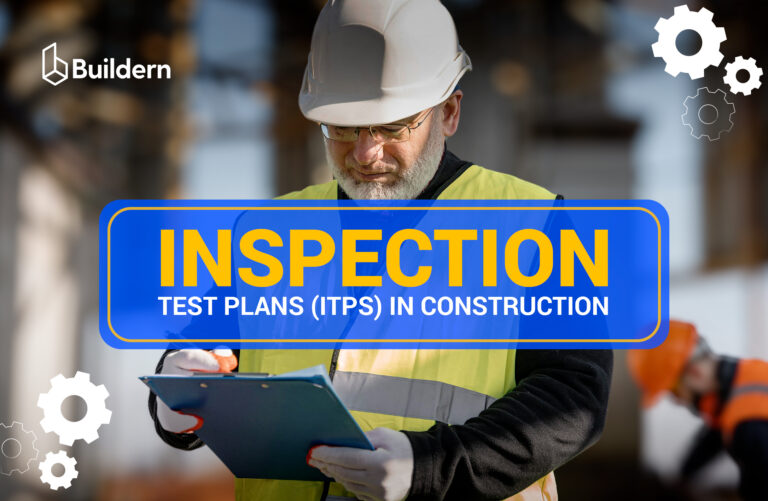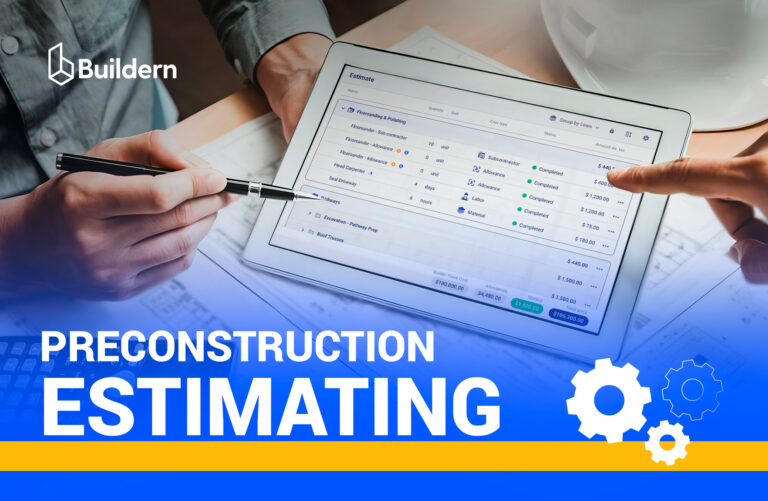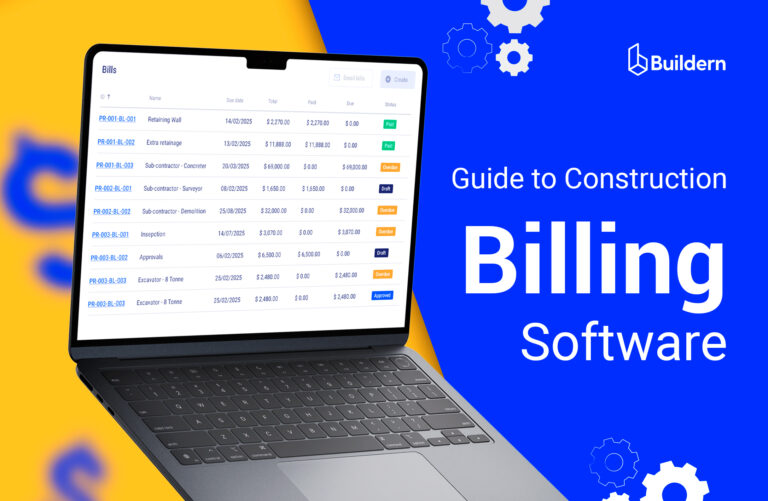Construction Project Management Best Practices: From Start to Closeout

Managing any project always includes keeping several things at the top of your mind. However, construction project management can be tougher due to some unique challenges the industry is famous for.
Tight schedules, strict budgets, and endless moving parts make every day a new challenge. In construction, there are too many directions to manage: financial management, procurement, constantly changing subcontractors, and schedules.
The right approach ensures there are no problems with the budget, teamwork is smooth, and the schedule is not disrupted. In my blog article, I will break down construction project management best practices and necessary tools to avoid common problems.
Table of Contents
- Why Is Construction Project Management a Challenging Task?
- Construction Project Management Process (A Quick Overview)
- Best Practices for Construction Project Management Success
- Bottom Line

Why Is Construction Project Management a Challenging Task?
Management of the construction projects is a high-stakes balancing act. Facing projects of different scopes and specifications is one of the toughest roles in the industry. Every project feels like a moving target. Deadlines shift, materials fluctuate in price, crews are clocking in and out, and you have to manage this all.
Even with the best planning, unexpected issues involving any portion of this work, from material supply to accounting, can have an impact on the entire project.
Here are some key challenges the project managers face today.
Coordination
A single project can involve dozens of subcontractors, vendors, and specialists. Keeping everyone informed and accountable requires constant communication. Misunderstandings or outdated information can quickly snowball into rework, budget overruns, or safety risks.
Budget Management
It adds even more pressure. Costs must be monitored daily, not just at major milestones. One missed change order or inaccurate time entry can throw off financial projections. At the same time, clients expect transparency and regular updates, which puts responsibility on project managers to track every detail.
Documentation
Another pain point is plans, contracts, RFIs, daily logs, reports, and approvals. All need to be accurate and accessible to the team. Managing these documents manually can create gaps, versioning mistakes, or lost information.
Limited Visibility Into Jobsite Progress
Without real-time updates, project managers are forced to make decisions based on incomplete information. Such a delay delays problem-solving and increases risks in safety, quality, and scheduling.
Rising Material and Labor Costs
Prices fluctuate quickly, and availability is unpredictable. According to recent data from the Associated Builders and Contractors (ABC), construction material prices have risen in the U.S. by more than 3.5% since last September. This makes accurate budgeting difficult and increases the risk of overruns if costs aren’t tracked in real time.
Construction Project Management Process (A Quick Overview)
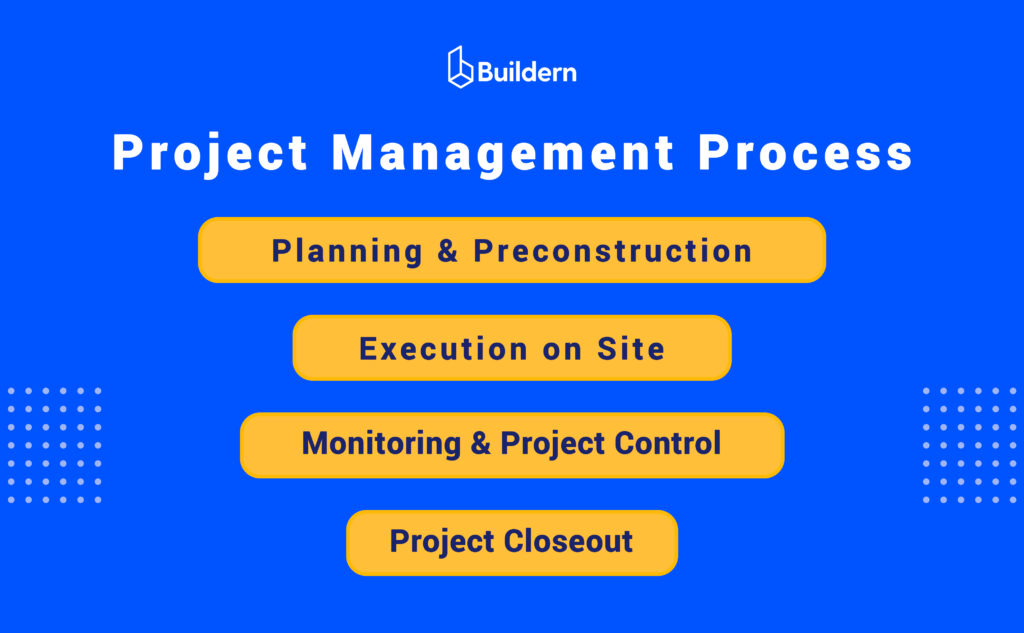
Planning and Preconstruction
While the initiation and feasibility phase comes first, it’s typically handled by project owners, developers, and early-stage design or engineering teams.
By the time a project reaches the planning and preconstruction stage, I step in as a project manager to transform ideas into an actionable roadmap. And this is where the real groundwork for project success is laid, and trust me, it’s one of the most demanding parts of the job.
It’s the most strategic and high-impact phase of the entire project management. Decisions made here influence cost, schedule, scope, and possible risks. Yet it’s also one of the toughest stages to manage because so many variables are still shifting. Material prices change, while subcontractors confirm availability and then change their minds. And I have to make all of this work together.
For me, the phase usually kicks off with bidding and estimating. I work closely with estimators to build a clear, defensible cost estimate based on drawings, quantities, subcontractor quotes, and current market conditions.
At the same time, I’m trying to build a schedule while half the moving parts are still being defined. It’s like assembling a puzzle when some of the pieces haven’t been delivered yet.
Execution on Site
Once the project moves from planning to the field, execution is where the real juggling begins. On any given day, the main task is balancing multiple teams, keeping an eye on the schedule, monitoring the budget, and making sure tasks are progressing as planned.
One of the biggest challenges during execution is managing change orders. Even small adjustments to the project can trigger a chain reaction of updates. Managing this part means ensuring every change is properly reviewed, approved, and communicated.
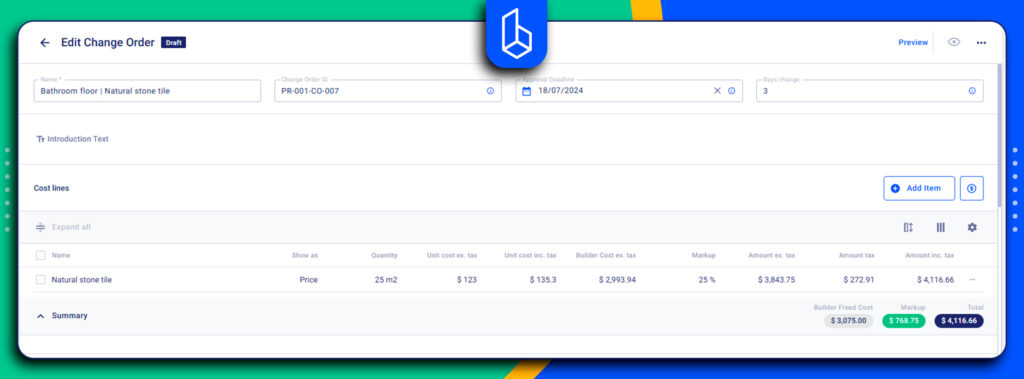
At this phase, task and team management are critical. Assigning clear responsibilities, tracking progress, and keeping crews coordinated requires daily oversight. I rely on structured task lists and time tracking to see who is on schedule, who may need support.
Finally, daily reporting is a non-negotiable part of my routine. Labor hours and material deliveries are only one part of the job. In the case of a large commercial project, it’s a team managing the mentioned activities in addition to equipment usage, procurement, and other tasks.
Capturing the details every day keeps the project transparent, helps anticipate issues before they escalate. Execution on site is relentless, but with disciplined coordination and constant communication, the chaos becomes manageable.
Monitoring & Project Control
Once the project is in full swing, monitoring and project control become my daily reality. The control phase is all about staying on top of what’s happening on site and making sure the plan we set during preconstruction is actually being followed. It’s constant balancing between tracking progress, managing the budget, and adjusting for any surprises that inevitably appear.
One of the toughest parts is keeping a clear view of progress versus plan. Tasks can fall behind, or materials may not arrive as scheduled. I spend a lot of time analyzing daily reports, comparing actual performance to the original schedule and budget.
Beyond just tracking tasks, this phase overlaps heavily with execution. I continuously check milestones and pay attention to the project’s critical path. Any updates or changes are communicated immediately to the team and stakeholders.
Project Closeout
After months of planning, execution, and constant monitoring, the project closeout phase is finally where everything falls into its place. The closeout stage is often overlooked, but in my experience, it’s just as critical as any other part of the project.
A smooth closeout ensures the client is satisfied and the team can move on confidently.
During closeout, I focus on completing punch lists, verifying that every task is finished according to specifications. It’s time for the final inspection and the review of all documentation, including contracts, change orders, daily reports, and warranties.
Another key aspect is handover and final approvals. Coordinating with owners, subcontractors, and inspectors to finalize inspections and obtain certifications. It’s a phase to close all contracts and release final payments, including retainage.
Now, let’s look at best practices that help teams manage each phase more effectively.
Construction Project Management Best Practices Listed
Construction is not done alone; it’s about teamwork. You can’t build and complete a complex project alone, either. Success depends on skilled crews, clear communication, and everyone working toward the same goal. But just like a team needs the right equipment to perform, a construction project needs the right construction software management tools.
#1 Establish Clear Communication Channels From Day One
If there is a lesson construction has taught me, it’s that miscommunication is expensive. The first thing to do is to establish communication channels not to have a mess.
Everyone, from subcontractors to site supervisors, needs to know how updates will be shared, where documents will live, and who is responsible for communicating what. Dedicated project portals for subcontractors and built-in messaging tools make this so much easier.
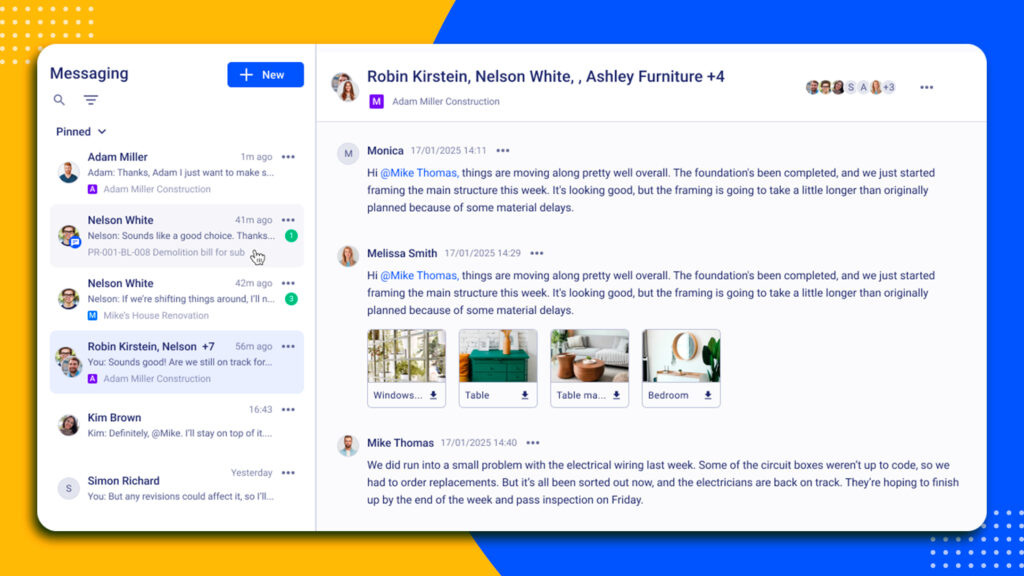
Clear communication also builds trust. When people know they’re working with accurate, real-time information, coordination becomes smoother and decisions happen faster.
#2 Track Time and Costs in Real Time
A schedule that sits untouched for a week or worse a month, is already outdated. By the time someone notices a delay, you’ve usually missed the window to recover. A real-time schedule is one of the most powerful tools a project manager can rely on.
Start with a solid master schedule that lays out dependencies, milestones, and the true critical path.
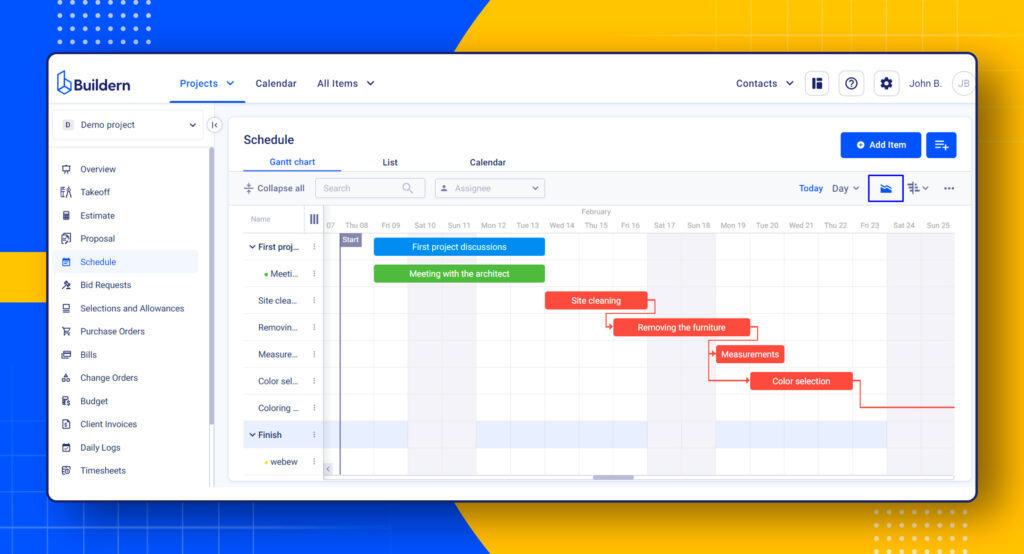
Field teams should have the ability to view and update schedule items directly from mobile devices. When a superintendent can mark tasks complete or see delays as they happen, the office gets immediate visibility.
The field-to-office connection transforms scheduling from a planning exercise into an active management tool.
#3 Maintain a Single Source of Truth for Documentation
Construction projects produce a great volume of documentation, such as drawings, contracts, RFIs, submittals, and change orders, the list goes on. Without structure, this information turns into a pile of outdated files and conflicting versions.
A centralized digital document management system is the only practical way to keep everything clean and accessible. When your entire team can pull up the latest approved drawings or specifications, you dramatically reduce the risk of rework caused by outdated information.
For example, QR codes allow field crews to scan and automatically pull up the most recent images on their mobile device. No more guessing whether it is outdated or running back to the trailer to double-check.
#4 Digitize Change Orders
Change orders are one of those common pain points every project manager knows too well. They show up unexpectedly and affect both your margins and schedules. The only way to stay ahead of them is to treat change management as a structured process.
QUOTE
A standardized workflow gives you that structure. Every change follows the same path: request → review → pricing → approval → implementation.
Everyone involved, including subcontractors, PMs, estimators, and owners, knows exactly where their responsibility begins and ends.
With a digital system, changes can be approved and e-signed in the same place, eliminating back-and-forth emails or paper approvals. Teams can also attach supporting files, such as photos or even timesheets, directly to the change order.
#5 Prioritize Field-to-Office Connectivity
One of the biggest challenges I face as a project manager is staying connected to the field in real time. The field and office teams not only have different tasks but are physically far from each other. Reliable timekeeping and task management tools are central to this. When crews log hours and progress against specific tasks, I can see exactly where labor is being spent and identify possible issues.

Adding geolocation tracking takes this a step further. The project manager can verify who’s on site, when, and where they’re working. The same is with the geofencing feature. Using timesheets, workers automatically clock in as they arrive on site, eliminating dozens of manual entries and reducing payroll errors.
At the same time, interactive maps show me exactly where teams were spending their time.
#6 Use Data to Drive Decisions
Relying on real-time data is necessary not only for a specific project but the entire business strategy. Every decision becomes far more precise when it’s backed by accurate information.
Collecting and analyzing data from multiple sources in the construction project management software, including daily reports, time logs, progress tracking, cost updates, and quality inspections, is a healthy habit.
Dashboards and reporting tools make trends visible at a glance. I can monitor profitability, track progress against milestones, and see the effects of change orders immediately.
#7 Find A Project Management Tool that Fits Your Business
The construction software market is full of options with different features. The key isn’t just picking the most popular tool but choosing one that actually meets your specific needs.
That said, not every project requires a full suite of features. If you mainly run small jobs, you might only need a reliable clock-in tool or a simple task tracker.
Start by analyzing your pain points. Do you struggle most with field management, time tracking, financial reporting, or document control? If you want to find a one-in-all solution, you most likely need a comprehensive tool that can solve multiple problems. It’s far easier to maintain accuracy when your scheduling, task management, and financials are in one place.
#8 Embrace Automation and AI
If there’s one shift I’ve seen accelerating in construction, it’s the rise of automation. AI in construction is becoming a major competitive edge.
AI-powered tools are transforming everything from estimating to billing. Instead of manually reviewing cost histories and production rates, AI can analyze past project data and suggest more accurate estimates based on patterns.
The same applies to AI billing, using which you can pull all details from invoices and store them in the software you use. I do not have to manually upload the invoices and fill in the lines like due date or vendor name. What usually takes hours can be handled in minutes, with no errors.
Bottom Line
Construction project management is a constant balancing between crews in the office and in the field, documents, and changing job site conditions. The challenges are real, but the project manager’s main goal is to introduce the right practices and patterns.
This goal is achieved by using communication, centralizing documentation, and using AI-powered automation. The next step is to choose the best tools to stay ahead instead of reacting after the fact.
Success ultimately depends on creating a structured workflow, maintaining real-time visibility, and choosing construction management software that supports every phase.

What is the Biggest Challenge in Construction Project Management?
One of the biggest challenges is coordinating multiple subcontractors, vendors, and suppliers while keeping schedules, budgets, and documentation aligned. Even a small miscommunication can lead to delays and rework.
What is the Best Project Management Method for Construction?
There’s hardly a single “best” method for every construction project, but most successful teams rely on a combination of different approaches. One of the most widely used methods is the critical path because it offers a clear roadmap of all tasks and their dependencies.
What Can AI Improve in Construction Project Management?
AI streamlines time-consuming tasks like estimating and billing. AI analyzes historical project data for more accurate estimates, automatically extracts details from invoices, and helps teams make faster decisions.
